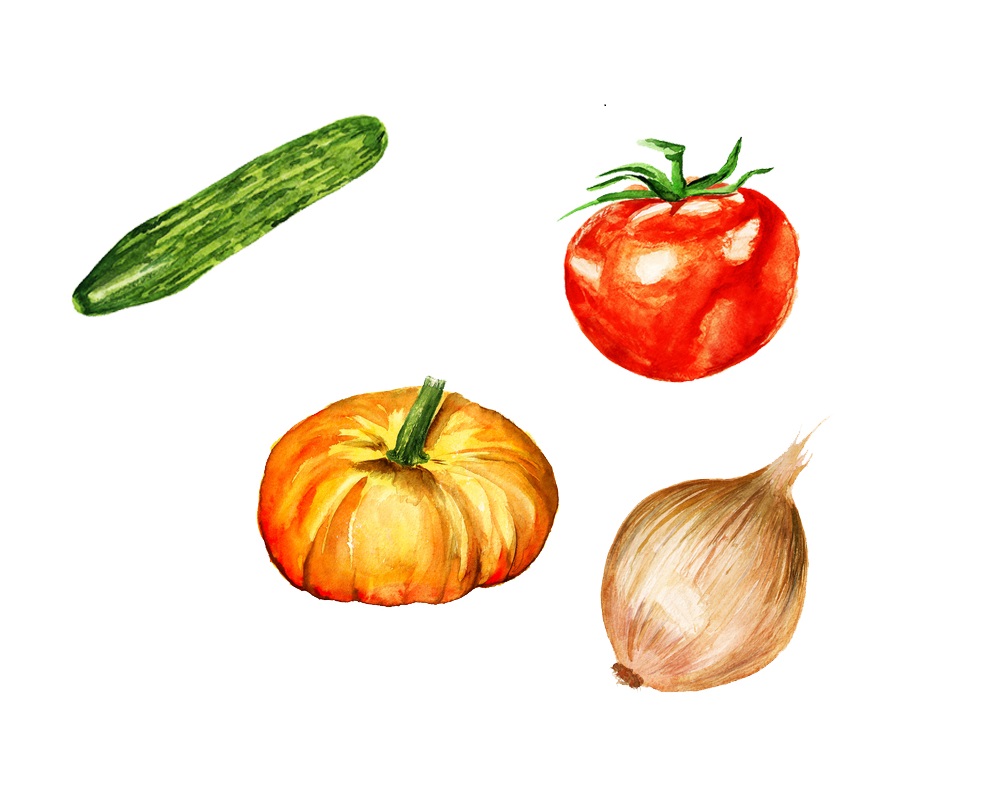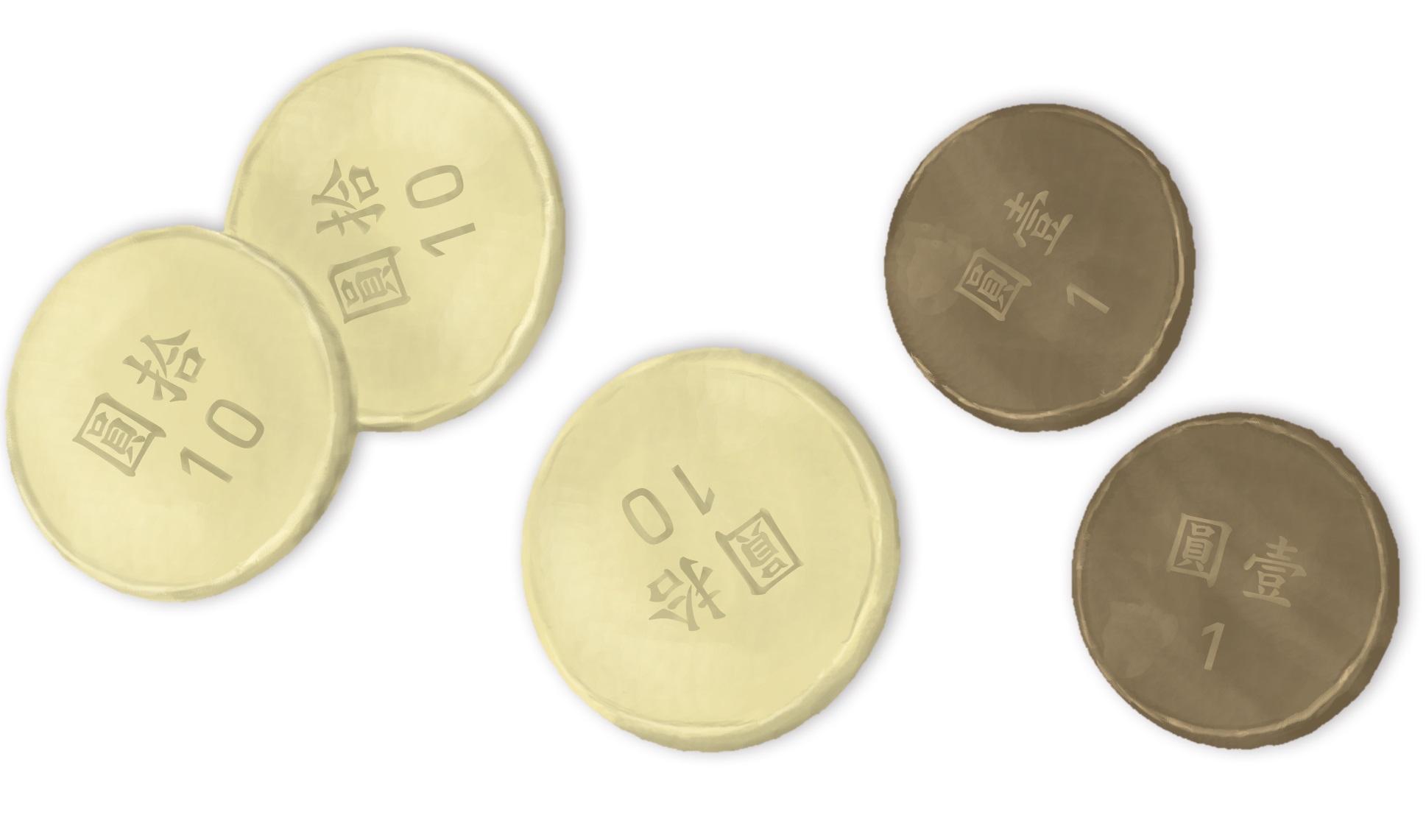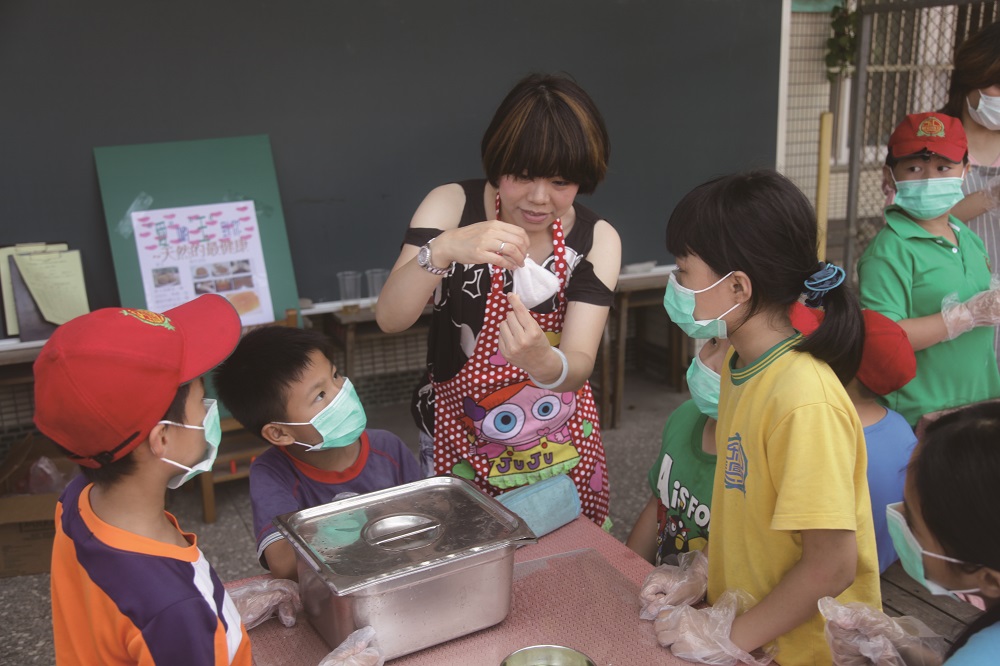As an everyday routine eating deserves due attention from us. And it is the best time to develop a sound attitude towards eating in the early stage of our life. He Xing Elementary School in northern Taiwan provides food education that is both interesting and informative.。

Junk food is too popular
Today most parents are busy with their jobs. Time is usually so pressing that they don’t have enough time to prepare healthy meals for their kids. Consequently, it becomes easy for many kids to get junk food that looks so attractive with enticing yet unhealthy colors and flavors.
Greasy hamburgers, colorful candies and overlysugared drinks are usually kids’ top favorites. Without some form of “improvement”, the food just looks boring and unattractive to kids.
Teach your kids about healthy diets
Most kids learn about food more from how it tastes and looks rather than how it is made. Food only belongs to two categories: yummy or yucky. To put them on the right track, parents’ attitude plays a key role.Never, ever buy your kids with proposals like: “Be good and I’ll buy you McDonald’s.” What you should do is allowing kids easier access to organic food, even encouraging them to plant vegetable and make their own food. You will see amazing results in terms of influencing their food choice. Together with the efforts from school, each child can be taught healthy dieting habits in the early stage of their life, and these habits will ultimately decide how healthy they are when they are fully grown. To see how food education is done in the elementary school, It’s O’right went to He Xing Elementary and shows you now here how the school successfully develops the concept of a healthy organic lunch meal.
The one-dollar lunch meal

“We’ve been tracing the amount of leftovers for a long time. The information allows us to precisely estimate the food consumption of students of different ages. As a result, we provide only the proper amount of food for students, which in turn keeps the leftovers to the minimum – just about 1-2 kg of leftovers for each meal (an incredibly low amount given the fact that there are about 200 students
and teachers). It makes the organic meal possible because we cut back the cost significantly,” said the school meal coordinator Tien. He went on to say: “An organic meal is not only good for the students. It also helps local small farmers.” He Xing Elementary even buys organic soybeans with the revenue generated from meals and provides homemade soybean milk to students as a supplement to their breakfast. Seeing the students sipping on the warm tasty soybean milk, we can tell that they prefer this kind of natural drink to beverages loaded with additives.


Photo /// Organic food is not unusual on lunch plates in He Xing Elementary School, students enjoying the simple yet healthy organic lunch
Kids love DIY
Kids were playing a food tournament when we visited the school. In one of the checkpoints, students were taught to make fig jelly by themselves. They were also asked to compare the handmade jelly with that bought from the supermarket, and the handmade jelly would be served after lunch as a snack. “Kids just love eating the food they prepare by themselves. In last semester, we taught our students to make potherb mustard. Speaking of potherb mustard, most kids just don’t like it because of the bitter taste, but our kids finished the fried potherb mustard happily on that day,” said Rui-xiang Lu, the principle of He Xing Elementary. Allowing kids to make their own food creates a sense of achievement, which makes the food taste even better. It is no surprise that the kids ate up all the fig jelly on that day.


Photo /// Teacher Jia-yu teaching kids to make fig jelly, students designing a menu and learning about food combination
Organic meals make big changes!
Organic meals are just a beginning. So many beautiful changes have been taking place. A student once ran to the principle saying: “Principle! I saw a candy wrap in the men’s room.” It turns out that a part-time English teacher brought the candy to school as a reward for students. A small candy wrap caused such a commotion! It can be concluded that candies or snacks are commonly seen in the school. “The teacher for the first grade Jia-yu also offered her observation: “At first students bring things like candies and chocolates to school. But most of them turn to biscuits, even homegrown fruits like watermelons after a period of time. Their parents also learn to prepare healthier food for their kids. Beginning with the child, we gradually extend the influence to his/her family.”
“All in all, we hope to extend the concept of organic lunch to green consumption and green lifestyle,” concluded Principle Lu. We believe the goal will be achieved and the fruit of their effort will be like the passion fruits dangling from the bamboo frame outside the school kitchen, abundant and tasty.
Organic Goes to School
To make the school meal nutritious and educational, He Xing Elementary School and three other schools in northern Taiwan co-organize an organic lunch alliance. As par t of the alliance, He Xing Elementary systematically introduces concepts like fair trade, food miles and organic diet to students as well as their families. Additionally, part of the school land is turned into a garden for kids to grow vegetables themselves. Through this personal involvement, kids learn to be thankful to the food on the plate. It also gives kids firsthand access to natural food.
For Kids, Colorful Means Tasty
Knowing that nutrition is crucial for kids, so in Taiwan each elementary school has to assign a nutritionist. The nutritionist is responsible for checking the hygiene of kitchen facilities and gives food education to students twice a semester. Schools are further required to hand out the lunch menu of the following month in advance for trophic analysis to ensure proper nutrient intake. When asked what kind of food is attractive to kids, the nutritionist of He Xing Elementary Rong-xiu Liu says: “Food with rich colors is attractive to kids. Sometimes kids reject the food simply because it looks dull.”


